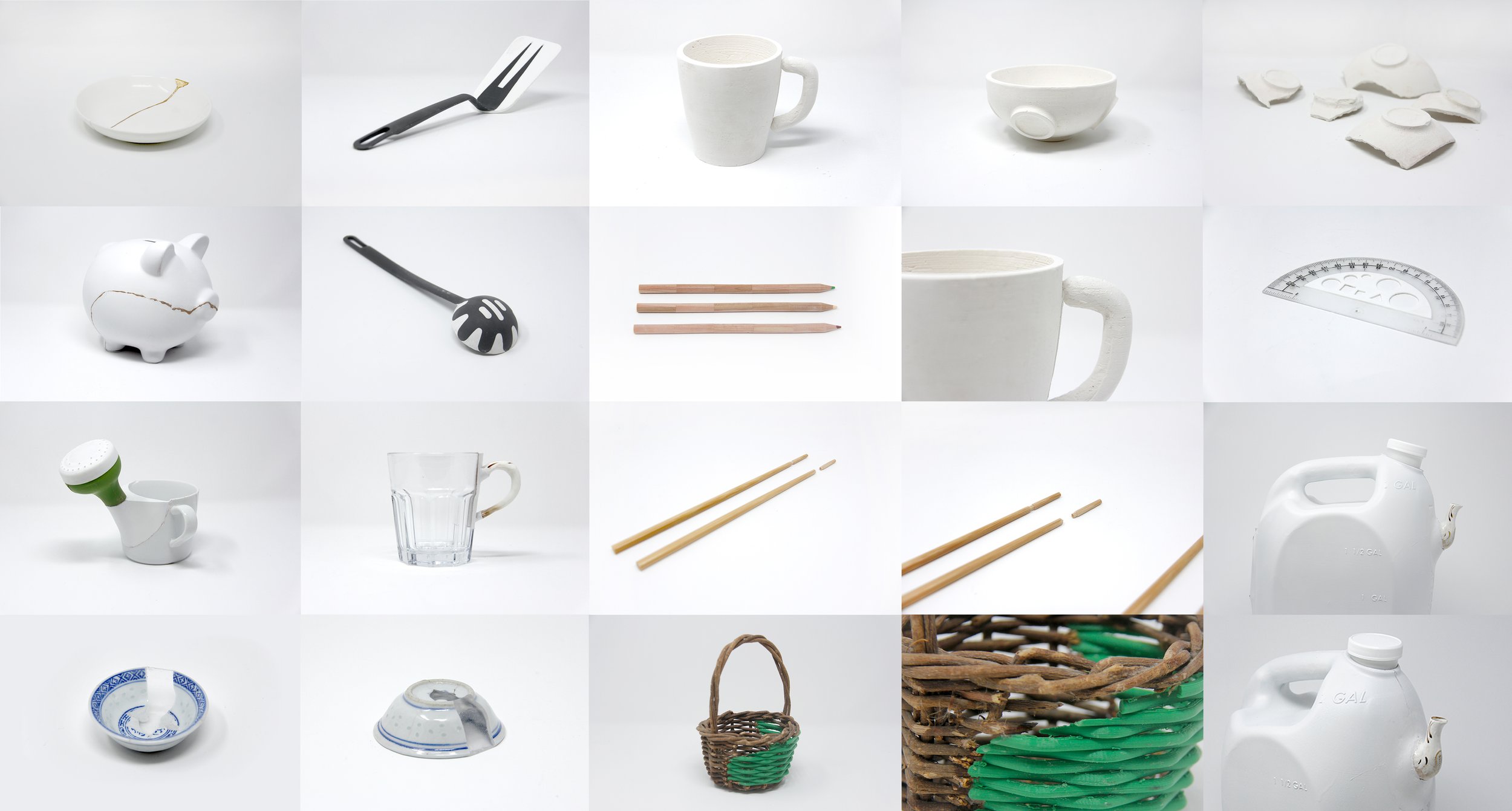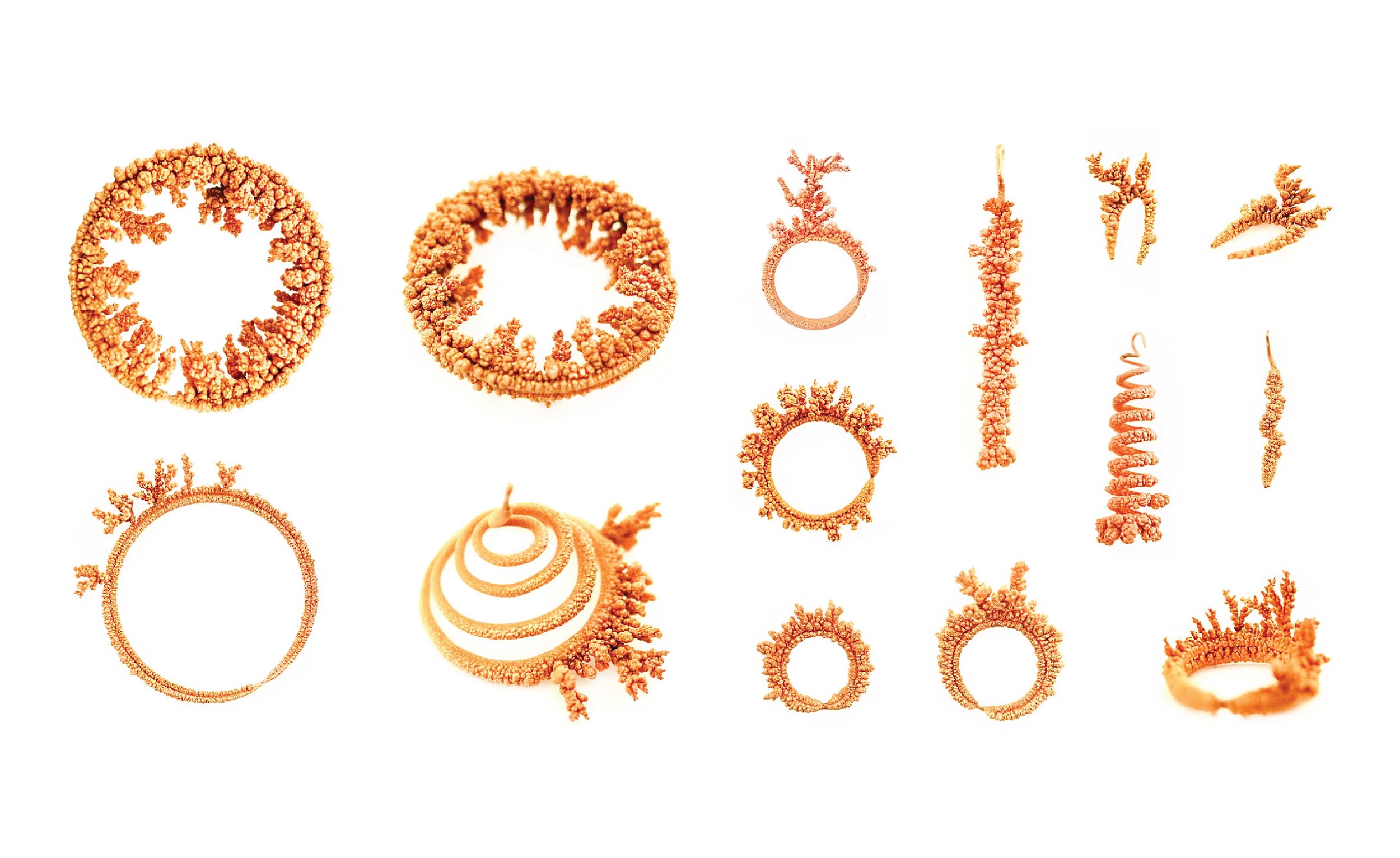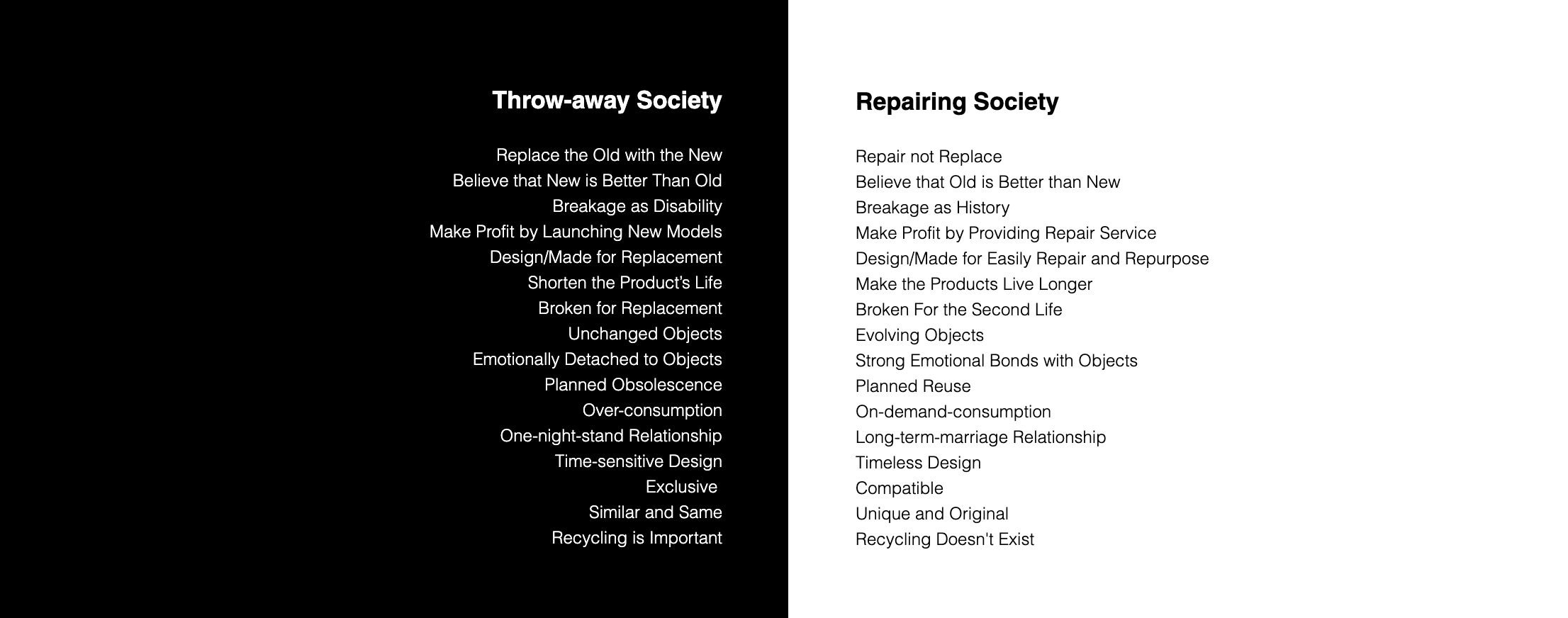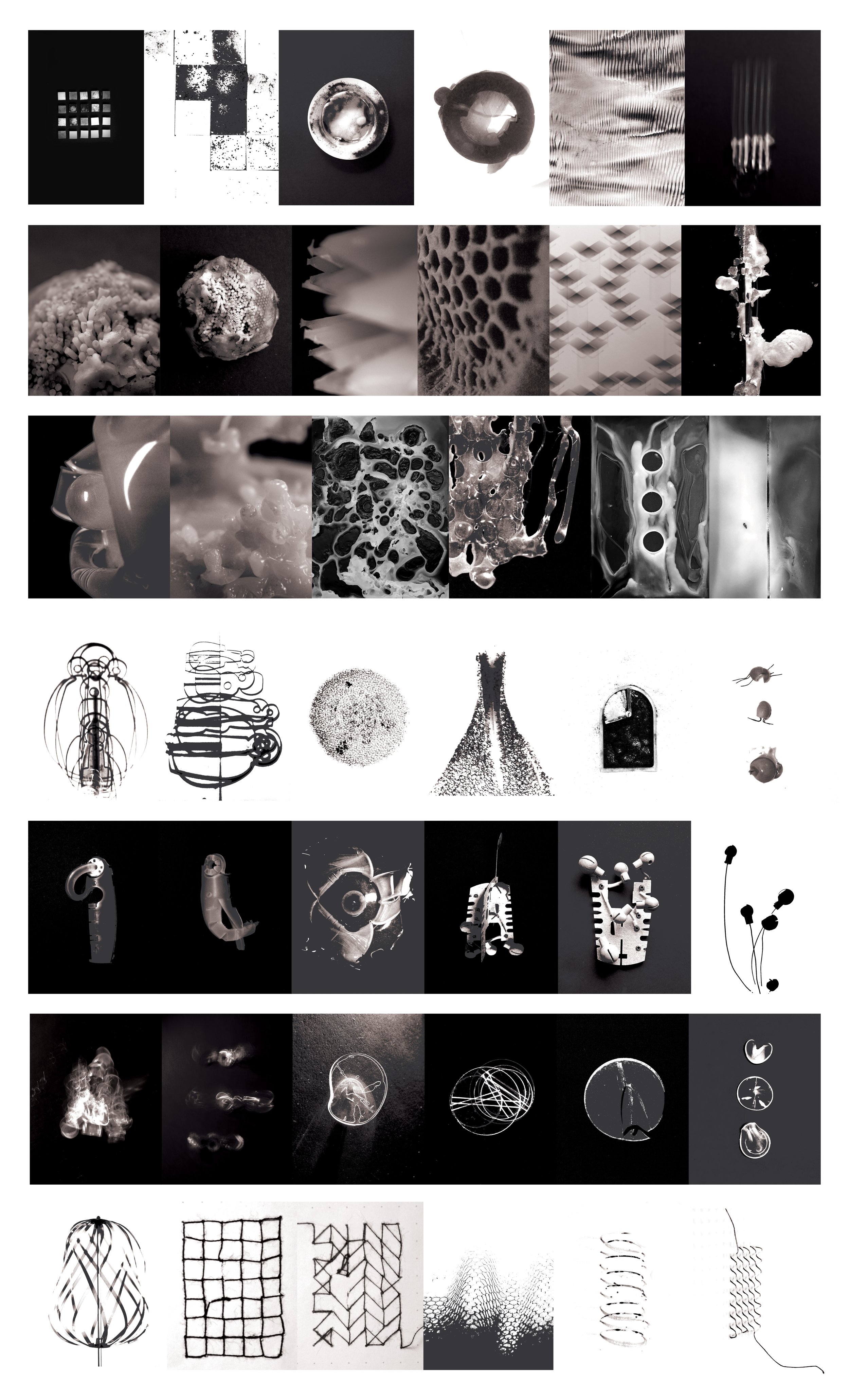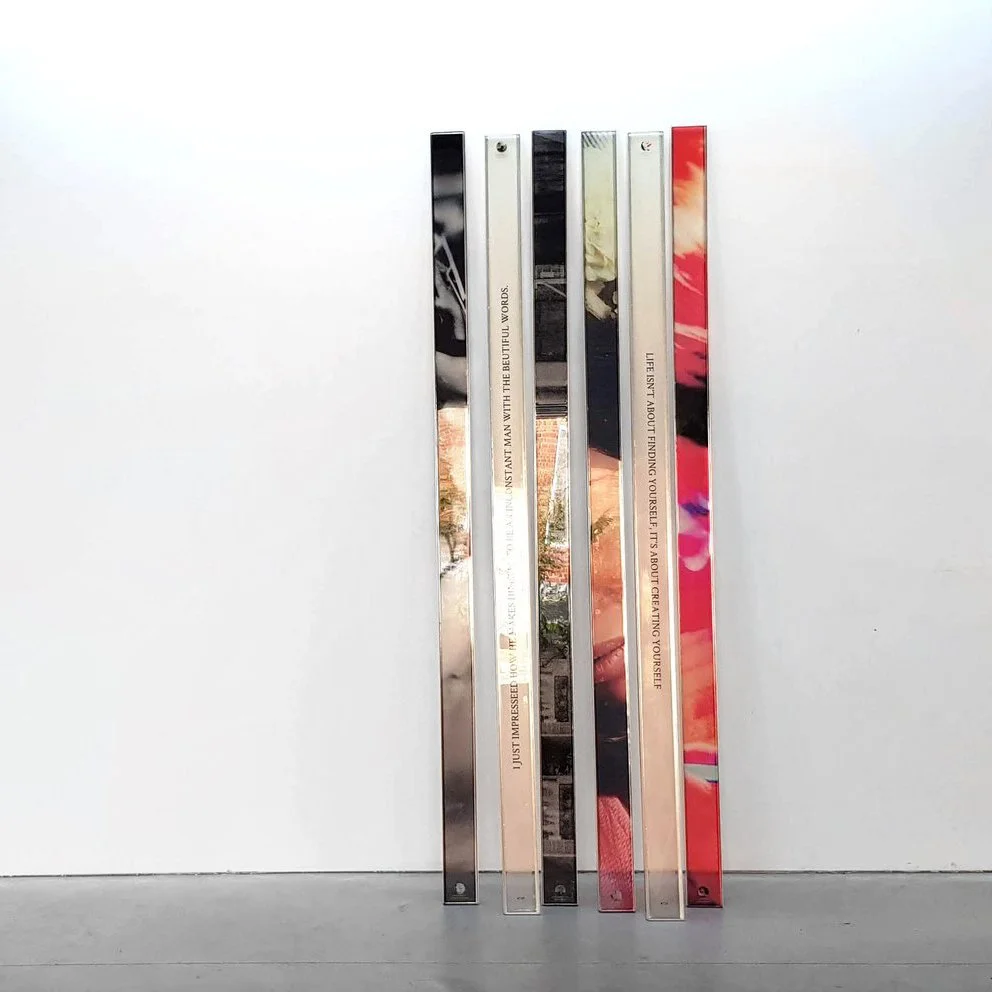INTERVIEW | Xiaodong Ma
10 Questions with Xiaodong Ma
Chicago-based visual artist and hybrid designer Xiaodong Ma was born in Nanjing, China, in 1991. After receiving his MFA from the California College of the Arts in 2019, he has been exploring the intersection between art and design for years with an unwavering obsession with the simplicity and intricacy of nature and man-made. Xiaodong's work revolves around transforming everyday objects, mediums, and processes into resonant works of art by exploring 2D/3D forms and textures. By reimagining the familiar and inviting audiences to reconsider the ordinary with fresh eyes, Xiaodong is committed to pushing the boundaries of visual art through his works. Xiaodong Ma is not only a Senior Designer at SRAM, Road team, but also a visual artist who dares to explore. His story is a journey of cross-cultural understanding, innovative exploration, and self-discovery.
Xiaodong Ma - Portrait
ARTIST STATEMENT
In the interplay between dimensions, Xiaodong Ma found his canvas for exploration. The art practice of translation between 2D and 3D is fertile ground for experimenting with unknown outcomes, challenging viewers to see and experience familiar forms in unexpected ways. Through his work, Xiaodong Ma endeavours to bridge (or break) the perceived gap between 2d and 3d of everyday objects, mediums, and processes. This dynamic experiment between dimensions serves as the cornerstone of his artistic expression, igniting a continuous dialogue between the tangible and the abstract.
Xiaodong Ma has made significant contributions to both industrial design and visual art. His design and artworks have won numerous international design awards, including the MUSE Design Award Platinum, IF Product Design Award, A'Design Award, IDA Design Award, and Red Dot Design Award. Additionally, his visual artworks have been widely exhibited and recognized internationally, with exhibitions in countries like the United States, the United Kingdom, Italy, South Korea, and Germany.
Repairing Society: A Nostalgia Future © Xiaodong Ma
Repairing Society is a speculative design practice inviting us to imagine an alternative way of consumption and production that is opposed to our current Throw-away Society. Through three proposals in this project (Repair, Graft, Autotomy), we can keep a longer relationship with objects and revive our bonds with old things.
INTERVIEW
You work with both design and visual art. Please tell us more about your background. And what inspired you to approach art?
My professional background is in industrial design, and over the past decade, I've primarily worked in the design development of healthcare and bicycle products. Currently, I am a Senior Industrial Designer at SRAM in Chicago, responsible for the design development of road bike components. In my daily work, industrial design is often rational, engineering-oriented, and driven by commercial goals, serving brands and consumers. However, during my three years in the MFA program at the California College of the Arts, I explored the intersection of design and art, particularly in the realm of visual art. Visual art, much like writing and speaking, has become a habitual means for me to express viewpoints. In contrast to industrial design, visual art provides more opportunities for me to express my personal identity. In this field, art and design are not ends in themselves; instead, they serve as tools and methodologies for me to reinterpret the familiar world.
I began to explore expressing my personal insights and identity through visual art in 2018. The skills and knowledge I've acquired in material technology and visual expression during my industrial design career have also equipped me to better convey my visual art concepts.
My first visual art piece, "Shadow Evolution," originated during the creation of a paper prototype for a commercial project at work. I was captivated by the various shadows formed by the paper under sunlight. The interplay of light and shadow, creating different shapes and illusions on the paper's surface due to its undulations, transformed the 3D object into a 2D representation with distinct positive and negative spaces. Inspired by this observation, I translated it into the "Reformation: Shadow Evolution" series—a two-dimensional artwork created spontaneously from a blank piece of paper.
What do you wish you knew about contemporary art before you got started?
Before embarking on my art journey, I often wished for a more comprehensive understanding and better preparation for the vast and dynamic realm of contemporary art. I delved into the works of various artists, ranging from Yayoi Kusama to Ai Weiwei, Marina Abramović to Yoshitomo Nara, to gain a deeper appreciation for the diversity of mediums, evolving concepts, and wide-ranging forms of expression within contemporary art. I sought to understand the efforts made by artists in challenging traditional forms—a challenge that extended beyond aesthetics. They questioned and critiqued modern lifestyles while predicting future societal trends.
Furthermore, before venturing into contemporary artwork, I contemplated whether the experiences and skills I had acquired in industrial and commercial design could assist me in creating contemporary art. I pondered how these personal experiences could shape my visual artworks to truly represent 'me.'
2e-: Copper Electrolysis Jewelry © Xiaodong Ma
Compared to traditional copper recycling, 2e- proposed an alternative solution that is more aesthetic and eco-friendlier. I collected scrap copper and converted it into copper crystal jewelry through electrolysis. The basic principle of crystal growing is to electrolyze a solution of sulfate with two copper electrodes. In this process, the anode (+) acts as a donor, and cathode (-) acts as a receiver. The copper molecules are separated from the scrap copper (+) and aggregated on the negative copper part which gradually forms coral-like copper crystals.
Your work is a hybrid between design and conceptual projects. Can you tell us about the process of creating your work? What aspect of your work do you pay particular attention to?
"What if … not …?
I begin by questioning the familiar aspects of life with 'what if...' scenarios. For example, 'What if chairs weren't meant for sitting,' 'What if piggy banks weren't disposable,' 'What if our consumption habits weren't driven by the constant pursuit of the new,' and 'What if everything could be used as a drawing tool.' These questions help break conventional thinking, sparking an exploration of possibilities.
Thinking by making
For spontaneous, non-commercial projects, I believe in starting to create without excessive planning. The act of making something often sparks new ideas. One of my projects, "Re-formation: image-object-image," explores the transition between dimensions by questioning the boundaries of 2D and 3D. I took everyday objects, disassembled, edited, and recombined them to transform them into unconventional drawing tools. These tools allowed me to create dots, lines, and patterns, leading to both 2D and 3D outcomes that evolved together. While the results sometimes lost connections to the original objects, they invited audiences to reimagine the familiar.
I have a particular focus on capturing the 'changes' and 'growth' of forms in my work. In addition to exploring the dynamics of 2D forms in projects like 'Shadow Evolution' and 'image-object-image,' I also enjoy observing the diversity of 3D forms. For example, in '2e-,' I experimented with the electrolysis process, controlling variables to create various copper forms resembling coral, mushrooms, and crystals. This approach contrasts with my rational and engineering-oriented industrial design background, as I find purity in shape, color, and texture highly appealing.
2e-: Copper Electrolysis Jewelry © Xiaodong Ma
Where do you get your inspiration, and how do you choose your sources?
In addition to 'thinking by making', I seek inspiration during the making process. Life itself serves as an endless resource of inspiration. However, capturing inspiration requires sensitivity, a habit of observing and recording life details, and the mindset to see infinite possibilities in ordinary things. Furthermore, personal experiences and insights can provide abundant creative ideas, and this self-derived inspiration carries unique labels that blend with race, culture, childhood, values, and more. For example, the electrolysis principle of '2e-'is derived from my understanding of the electroplating process from industrial design projects, 'Re-formation: The color, texture of music' uses fluorescent powder from childhood toys, and speculative artwork 'repairing society' is inspired by Kintsugi, a repairing technique I learned from a Japanese classmate.
While many creators choose resources based on themes, I believe that visual art creation is spontaneous and unplanned. I always find themes from the resources attracting me, such as the unique textures of seashells on the beach, the unique shape of each stone on the hiking trails, or the play of light and shadow created by the wrinkles on a sheet of paper. I document these everyday items, turning them into the resources of my visual artworks.
Experimentation with textures, mediums, and techniques is a central element in your art. What are you most interested in? And what messages would you like to convey with your work?
I'm passionate about two types of artwork: visual art and speculative art.
In my visual art pieces, the medium itself becomes the subject, as seen in the Re-formation series, which explores variations in shapes, colors, and textures. In these works, I express my fascination with pure 2D and 3D forms, using them as a means of self-expression.
On the other hand, my speculative art pieces use shapes and textures as tools and elements to express subjects. These tangible elements are employed to provoke thought and engage with subjects related to rethinking existing lifestyles and consumption habits.
Repairing Society: A Nostalgia Future © Xiaodong Ma
Repairing Society: A Nostalgia Future © Xiaodong Ma
Let's talk about your series, Repairing Society. How did you come up with this idea? And what is your ultimate goal with this series?
My artwork serves as a visual language through which I articulate and share the intricacies of my inner world and my perception of the external environment. For instance, I hold a deep sentimentality for nostalgia and have a fascination with the stories behind old objects. Even when these items bear cracks or peeling paint on their surface, I am captivated by the details that narrate and record history.
In 2018, I drew inspiration from Kintsugi, a Japanese art form known as kintsukuroi. It involves repairing broken pottery with lacquer dusted or mixed with powdered gold, silver, or platinum. Translating to 'golden joinery,' this philosophy views breakage and repair as part of an object's history rather than something to conceal. We can also find similar historical traces in our daily objects, such as the patina on a watch or the year on a wine bottle. These markers accumulate over time and signify the relationship between objects and their owners, sometimes even forming a connection between individuals.
Kintsugi proposes that broken and old objects can possess greater value than new ones, aligning with the philosophy of Repairing Society. In this model, individuals keep and reuse old items through regular repair and repurposing. Brands and designers are required to consider, from the beginning of product development, how products can be easily repaired or repurposed and how to foster quick consumer attachment to their designs.
My speculative artwork, 'Repairing Society: A Nostalgia Future,' envisions a society parallel to our current Throw-away Society, emphasizing repair over replacement. It explores three subtopics: Repair, Graft, and Autotomy.
'Repairing Society' functions as an imagined world in contrast to our Throw-away Society. It serves as a consumer education paradigm advocating for 'Repair, not Replace.' This paradigm guides consumers on how to consume responsibly and instructs designers, brands, and manufacturers on how to create sustainably. I hope that the concept of Repairing Society will sow a seed in people's consciousness, encouraging them to maintain their emotional connections with objects. These objects help individuals understand themselves better and foster deeper connections with others through their historical and narrative value.
For example, my grandmother treasures a love token—a pen given to her by my grandfather as a symbol of their affection. My parents keep my stamped plaster footprint as a celebration of my birth, their only child. I collect gifts from my friends to cherish our friendships. These objects help us discover our values and affirm our humanity. If we continue to detach from objects and dispose of them thoughtlessly, we may risk losing a part of ourselves.
Re-formation: Image-Object-Image, Print, 2020 © Xiaodong Ma
By questioning the boundaries of 2D and 3D, Re-formation series was created to explore the transition between dimensions. I chose everyday objects and unfamiliarized them by recombining, such that they became drawing tools. Each cycle of the drawings and drawing tools evolved together and invited audiences to reimagine familiarity.
The series seems to tackle environmental awareness and the relationship between late capitalism and what you define as a "Throw-away Society." What do you think is the role of art in addressing such themes?
“The ‘Throw-away Society’ is not so much about thoughtless plundering. It’s not just a confluence of carefree consumers with little or no concern for their own future or the future of the planet. It’s a society locked into perverse consumption practices by its own ineluctable logic.’”
Repairing Society focuses on nurturing a deeper emotional connection between objects and humans by fostering a 'Repair, Not Replace' culture. I believe that this design approach can offer readers insights into boldly envisioning an alternative consumption and production model, in contrast to the prevalent Throw-away Society. By advocating for the repair of items, its aim is to extend the lifespan of objects, thus strengthening the enduring bonds between objects and people and rekindling our relationships with older possessions.
It is not practical to completely overturn the deeply ingrained patterns of overconsumption and overproduction through design alone. Moreover, the emotions that old objects evoke through memories and positive interactions with their owners are beyond the control of designers. However, through this design practice, my goal is to plant seeds in people's minds, encouraging long-term changes in both perception and behavior. Ideally, this type of change, where we prioritize repairing objects, can also mend our societal fabric. It prompts a reimagining of our connection to the material world, the environment, and our sense of empowerment.
Is there anything else you would like to experiment with? Is there any technique or medium you would like to incorporate into your work?
Yes, definitely! I've always had a strong desire to experiment with different art forms, including clay sculpture and welding-installation art.
Let's talk about the future. What are you working on now? Do you have any new projects or exhibitions coming up?
In addition to my role in industrial design, where I develop SRAM bicycle components, I'm also engaged in creating speculative artworks related to future food. This work delves into the evolving dining experiences that arise from the increasing use of food technology, especially molecular gastronomy, which places less emphasis on food shapes and colors while preserving taste.
And lastly, where do you see yourself and your work five years from now?
In the next five years, my goal is to expand the scope of my Re-formation series by mastering various crafting techniques like sculpture and welding. I also plan to explore the possibility of organizing a solo exhibition focused on the theme of Re-formation. Through this exhibition, I aim to engage a wider audience and convey the idea that 2D and 3D forms in our daily lives are constantly evolving and dynamic.
Artist’s Talk
Al-Tiba9 Interviews is a promotional platform for artists to articulate their vision and engage them with our diverse readership through a published art dialogue. The artists are interviewed by Mohamed Benhadj, the founder & curator of Al-Tiba9, to highlight their artistic careers and introduce them to the international contemporary art scene across our vast network of museums, galleries, art professionals, art dealers, collectors, and art lovers across the globe.

